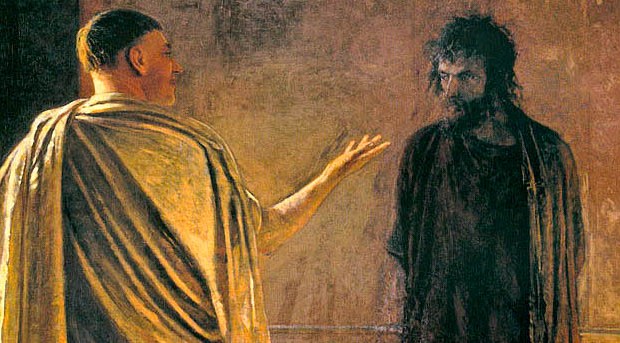After Judas, the single man most responsible for Jesus’ death was Pontius Pilate. He had the power to release Jesus and protect him from the raging crowds. Yet, he did not and simply “passed the buck” to the people and said, “I am innocent of this righteous man’s blood; see to it yourselves” (Matthew 27:24).
Even with that evidence some Christians venerate him as a saint, with a feast day on June 25.
Why is that?
According to the Biblical Archeology Society, “early Christians saw Pilate in a very different way. Augustine hailed Pilate as a convert. Eventually, certain churches, including the Greek Orthodox and Coptic faiths, named Pilate and his wife saints. And when Pilate first shows up in Christian art in the mid-fourth century, he is juxtaposed with Abraham, Daniel and other great believers.”
The ancient historian Eusebius supports this claim by saying Pilate converted after seeing the many wonders that occurred after Jesus’ death, even reporting it to Tiberius.
And when the wonderful resurrection and ascension of our Savior were already reported abroad, in accordance with an ancient custom which prevailed among the rulers of the provinces, of reporting to the emperor the novel occurrences which took place in them, in order that nothing might escape him, Pontius Pilate informed Tiberius of the reports which were reported abroad through all Palestine concerning the resurrection of our Savior Jesus from the dead. He gave an account also of other wonders which he had learned of him, and how, after his death, having risen from the dead, he was now believed by many to be a God.
There have been several conflicting reports over the centuries, but many Eastern Churches (such as the Coptic and Ethiopian churches) celebrate Pontius Pilate and his wife as saints. It may be strange for Western readers to hear of such veneration, but it is a reminder that no one is excluded from the grace of God.
Even Pontius Pilate, who sent Jesus off to die, could be redeemed and may even be a saint in heaven.
With God, all things are possible.

Read more:
Is this where Pilate condemned Jesus?

